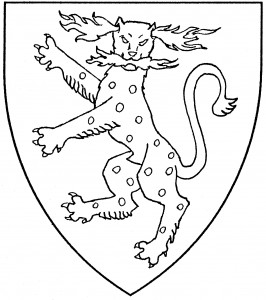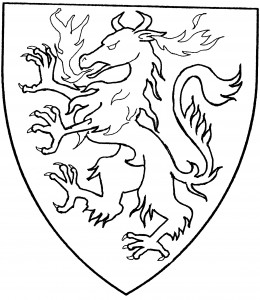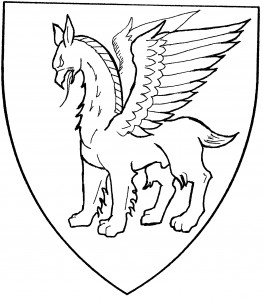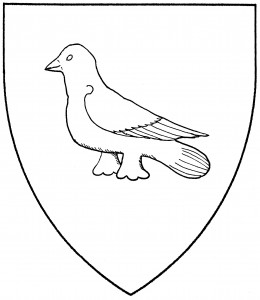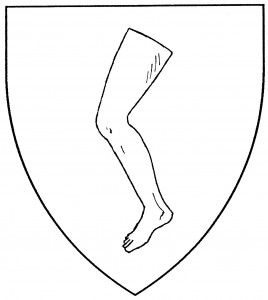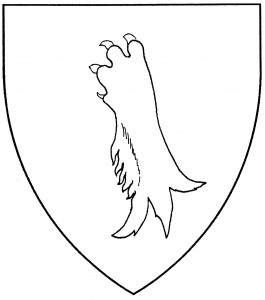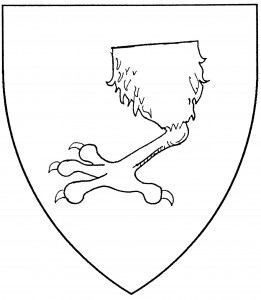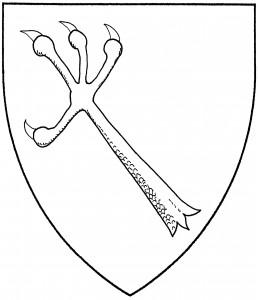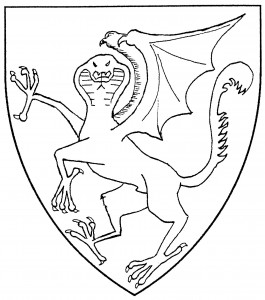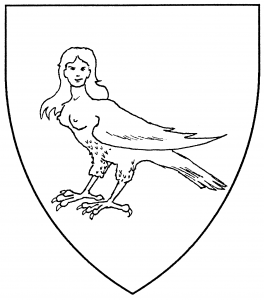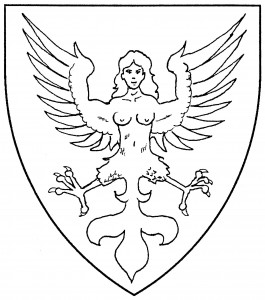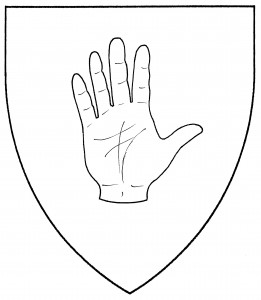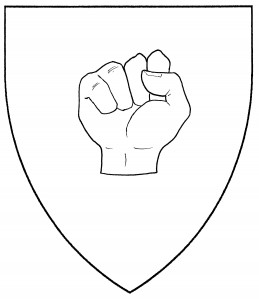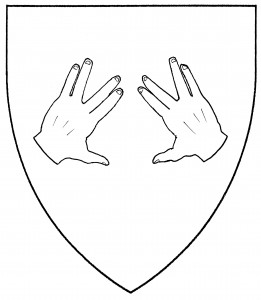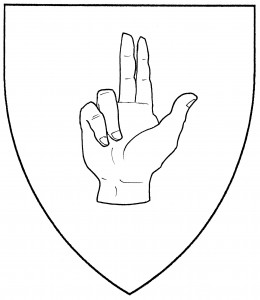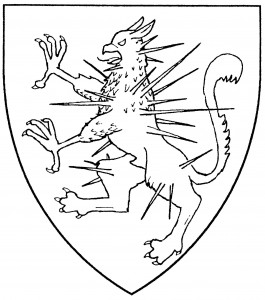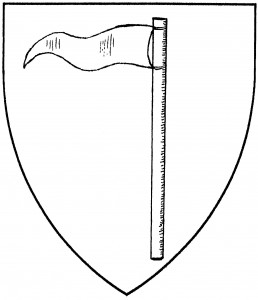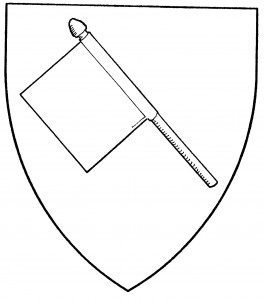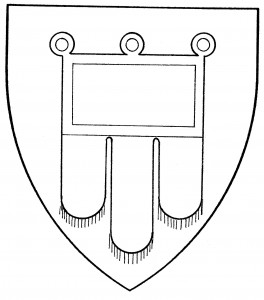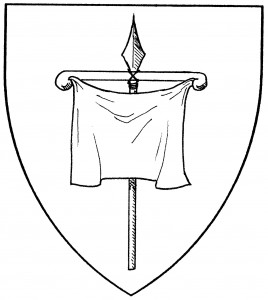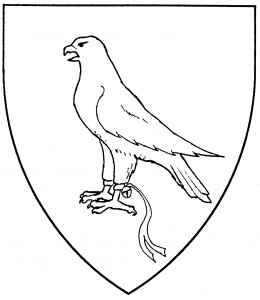The unmodified term “panther” refers to a kindly monster, described in medieval bestiaries as beautiful and amiable, whose sweet breath drives away evil. Heraldically, the panther comes in two widely differing forms; current Society practice grants heraldic difference between them.
In English armory, the panther is depicted as a maneless lion, “incensed”, i.e., with flames spewing from its mouth and ears (a misrendering of its “sweet breath”), and the coat strewn with roundels (frequently multi-colored). This form is usually found guardant in period armory, as with the badge of Henry VI, d.1471 [HB 110]; the illustration shows a panther rampant guardant. This is considered the default panther in Society armory.
In Continental armory, the panther is depicted with a lion’s body and an eagle’s forelimbs; it usually has the head of a horse or bull, and occasionally has horns as well. Like the English form, it is incensed. In Society armory, this form is blazoned a “Continental panther” or “German panther”; the illustration shows a Continental panther rampant. As an heraldic charge, it dates from c.1340, in the arms of Styria [Zurich 31]. Some authors speculate that it might have been the precursor of the monster now called a “male griffin” or “keythong”.
Over the years, the Society has changed its default postures for panthers, of both sorts. Current practice is that both types of panther are not guardant by default; the guardant English panther can be so blazoned.
When blazoned a “natural panther”, the term refers to the great feline beast as found in nature; it may also be blazoned by the period term “ounce”, or the Society term “catamount”.
Elspeth Colquhoun bears: Purpure, in pale two panthers passant counter-passant guardant argent spotted of diverse tinctures and incensed proper.
Talon the Bastard bears: Pean, two panthers rampant addorsed Or spotted sable.
Alrick von Baeker bears: Or, a Continental panther passant bendwise azure incensed gules.
William the Silent bears: Or, a natural panther passant guardant sable.
